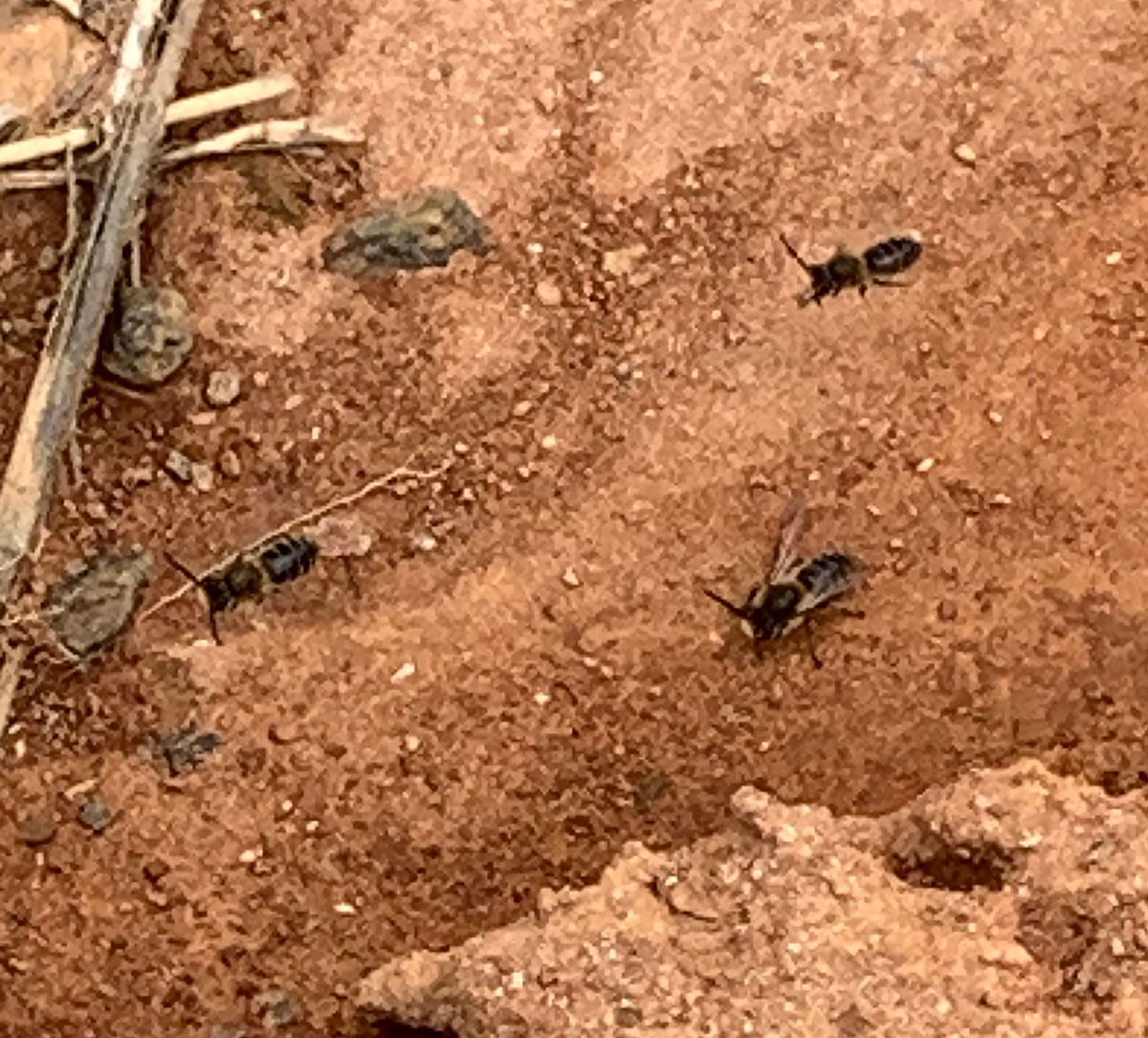So, there are maybe around 1200 species of this kind of solitary Andrenid bee, and I couldn’t (wouldn’t) get close enough for a photo to be able to figure out which kind this was.
When I’ve noticed these bees, it’s because I’m walking down the driveway and suddenly I hear a lot of buzzing and see tons and tons of flying insects darting back and forth and around these little holes all over bare clay on the hill and drainage area next to the drive.
I first noticed them last year, and it was admittedly a little freaky. I assumed they were some kind of hornet or wasp or yellow jacket, since they lived in the ground, so I did keep my distance.
Well, THIS year was different. Why? Because I had started keeping honey bees. And when I was walking down the driveway a few days ago, I heard something. Something familiar. The sound of bees flying in the air. Then I saw that all of these insects were flying around in and out of holes like last year. However this time, something in me was saying “they sound like the honey bees… maybe they aren’t a wasp/hornet/yellowjacket? Then I just stood there, and got pretty close, just watching them. Trying to see what they looked like (and get a few photos). These gals didn’t even flinch. Definitely not aggressive.
I decided to look up “ground bees” and that’s when I discovered the Andrenid bee (that’s just a big family of these kinds of bees) that live underground (hence the “miner” in the name) in holes, and are solitary bees as compared to the hive communities of, say, a honeybee.
These are beneficial insects that contribute to pollination of many plants, including in agricultural areas. It’s best to let them bee. However if you do need to dissuade them, spraying water where they are nesting can help move them along.
Here’s some more interesting information about mining bees from UVM Field Station: “They are “buzz pollinators” that set up a vibration which causes a flower to release its pollen. Apples and other fruit trees, several species of orchids, and blueberry/huckleberry are among the plants they favor. Mining bees were “The Bee” in blueberry-growing areas until they were replaced by European honeybees, which in hindsight turns out to have been a flawed idea. Events of the past few years have demonstrated the downside of relying on a single pollinator for the majority our food crops.”
Size: Honeybee sized or slightly smaller Family: Andrenidae Habitat: They like to build their nests a burrow (hole) in areas of sparse vegetation, old meadows, dry road beds, sandy paths, bare dry clay. Identification: Fuzzy body, mostly black with a little white. Slightly smaller than a honey bee. Emerges in very early spring.












